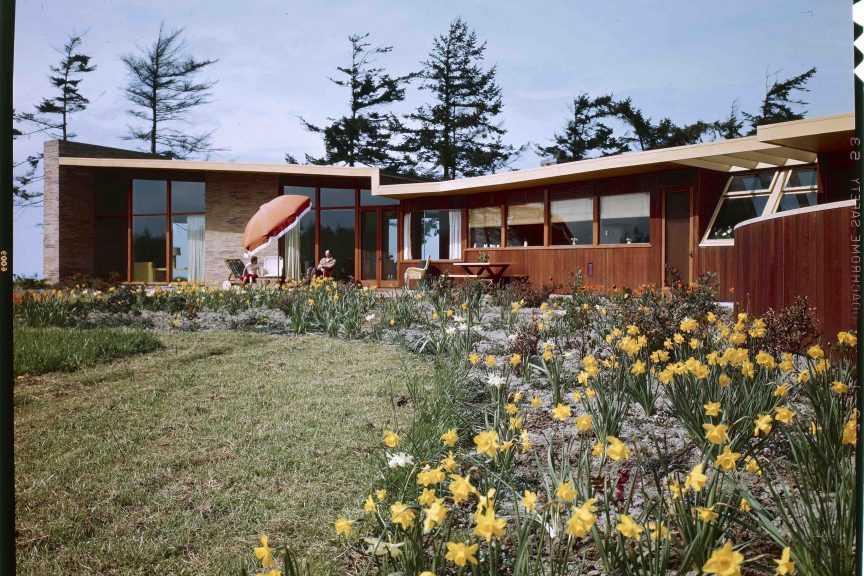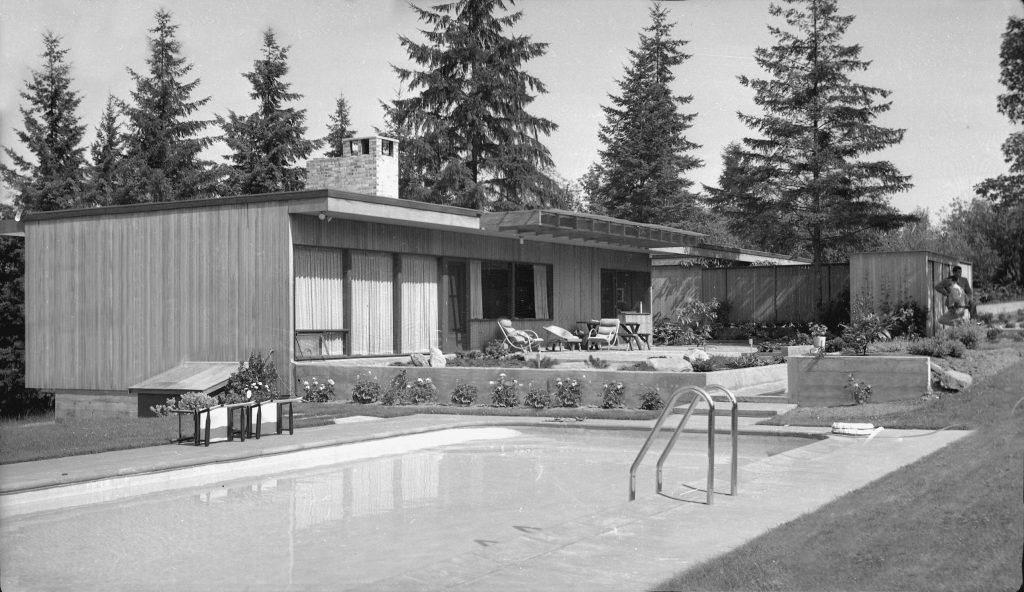A Seattle writer hopes to give Paul Hayden Kirk the book he deserves

Those who follow Pacific Northwest architecture know how stunning our midcentury works can be. Embedded into hillsides, wrapped in natural materials, and with glassy exteriors for bringing the great outdoors inside, local architects spent the 1950s and 1960s creating homes that could only exist in the Puget Sound region. But stray outside from the upper-left and there’s not much recognition of this work, much less its originator Paul Hayden Kirk.
Local writer Dale Kutzera hopes to change that with a book devoted to Kirk. After years of research, it’s close to finished—and he hopes a $16,000 Kickstarter campaign can make it a reality. With a few days left, it’s just shy of $3,000 short.
Hopefully, he says, the book “will inspire other people to look at some of this architecture and look at it, write about it and, build up the audience that’s interested in it, because that’s the only way we’re going to really save it and cherish it and preserve it.”
Kutzera fell in love with modernism when he moved to Los Angeles following his graduation from University of Washington. Upon moving back to Seattle seven years ago, he realized one of the Northwest’s distinct styles wasn’t getting much recognition: The Northwest Modern.
“Up here in the Northwest, it’s easy to kind of think that everything is either a craftsman bungalow or a ranch-style house,” says Kutzera. Northwest modernism has an enthusiastic, cult-like following—but not the same recognition as Southern California moderns.
“There’s a couple of books, but there’s nothing really in depth that tries to sort out [Northwest] modern design and what was going on up here in the Puget Sound when the midcentury crowd was doing its thing in Southern California and the Harvard [and] Yale crowd was doing its thing in the Northeast,” recalls Kutzera. “And so I started to do some research and I thought, hey, I’m a writer. Why not just write a book?”
Seattle has many iconic modern architects; Kutzera points to Paul Thierry, Roland Terry, Ralph Anderson, and AO Bumgardner, among others. But as the father of a uniquely Northwest brand of modernism, Kirk was the logical focus—and there’s a lot to focus on.
Untangling Paul Kirk
In his research, Kutzera has learned a lot about Kirk. By all accounts, Kutzera says, Kirk was a “relentlessly optimistic” person. The architect did all his work one-handed—he lost the use of his right arm from childhood polio.
The hard part is identifying and authenticating the hundreds of homes Kirk designed over his career.
“One of the reasons I picked Paul Kirk is that he could do so much,” explains Kutzera.
Kirk was part of a close-knit community of University of Washington architecture graduates, so Kutzera has plenty of archive materials to work from, but there’s a lot to sift through and no real roadmap. The bulk of Kutzera’s work has been digging through UW collections, then following up with what he finds. Since the majority of Kirk’s work was on private homes, it’s a lot of manual parsing.
“It was a real interesting challenge to sort out his career, because no one had really done that before,” explains Kutzera. “There is a big archive of drawings at the UW—and of course, there’s a whole bunch of articles that have been written about Kirk. But no one really brought it all together.”

When Kutzera tracks down a likely Kirk home, he tries to reach out to the current owners and follow up with previous owners or their families—they might have paperwork confirming the house is a Kirk collecting dust in a garage or attic. But finding those homes in the first place can be a challenge.
Kirk’s papers often list clients under their previous addresses, not the current address, and land parcels have shifted over time. He’ll view houses Google Maps first to see if they even look like one of Kirk’s works, although that’s easier said than done.
Hidden by design
The nature of Northwest Moderns provides a unique challenge in preservation or even finding them in the first place. These homes were designed to keep a low profile from the street and defer to the world around them—often embedded in thick forests. While it’s a distinct part of the style today, those plantings weren’t always so dense. When these were built, says Kutzera, often the land had been recently logged.
“You’re talking about young second or third growth trees,” he says. “There are some Kirk homeowners, and their house is in a forest, but they have pictures [of when] you could see Lake Washington from that house or you could look all the way down and see Mount St. Helens from that house, because none of the trees had grown back to their current, fully-mature size.”
That curbside modesty is by design, but it also means that to fully appreciate these homes, they need to be viewed from the inside.
“The design showstoppers are really from being in those places, looking out over the landscape, looking out over your backyard or looking over a view,” says Kutzera. “That was really the experience much more than the shape of the house has seen from the outside.”

If it’s hard to notice the architectural significance of these homes without taking a closer look, he explains, “it’s very easy just to tear it down.” In some cases, all that’s left is photos from old tax assessor records in the Puget Sound Regional Archives.
“Simplicity was a very important quality to [Kirk],” he explains. “He liked things very, very simple and nothing fancy. And he did some fancy houses that have a lot of detail—but he let the detail come through in things like how the structure was done and exposed, and the joinery of the structure.”
From research to reality
While most of the book’s writing and research is done, the finish line is pretty expensive: Designing, editing, gathering photography rights, and printing. Kutzera says he turned to Kickstarter so he can make sure this is a book people are even looking for before he moves forward.
“There’s a lot of affection for Kirk and a lot of people have stepped up and contributed to the effort,” he says. “So fingers crossed it will go forward.”
Assuming funding goes through, Kutzera is ready to “hit the ground running” in July—he already has a designer on board.
“It’s great when you can shine a spotlight on something,” says Kutzera. “and the spotlight hasn’t been shined on that world in quite a while. I hope the book will do that again.”
